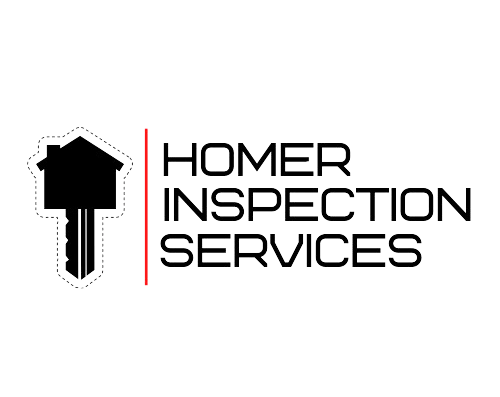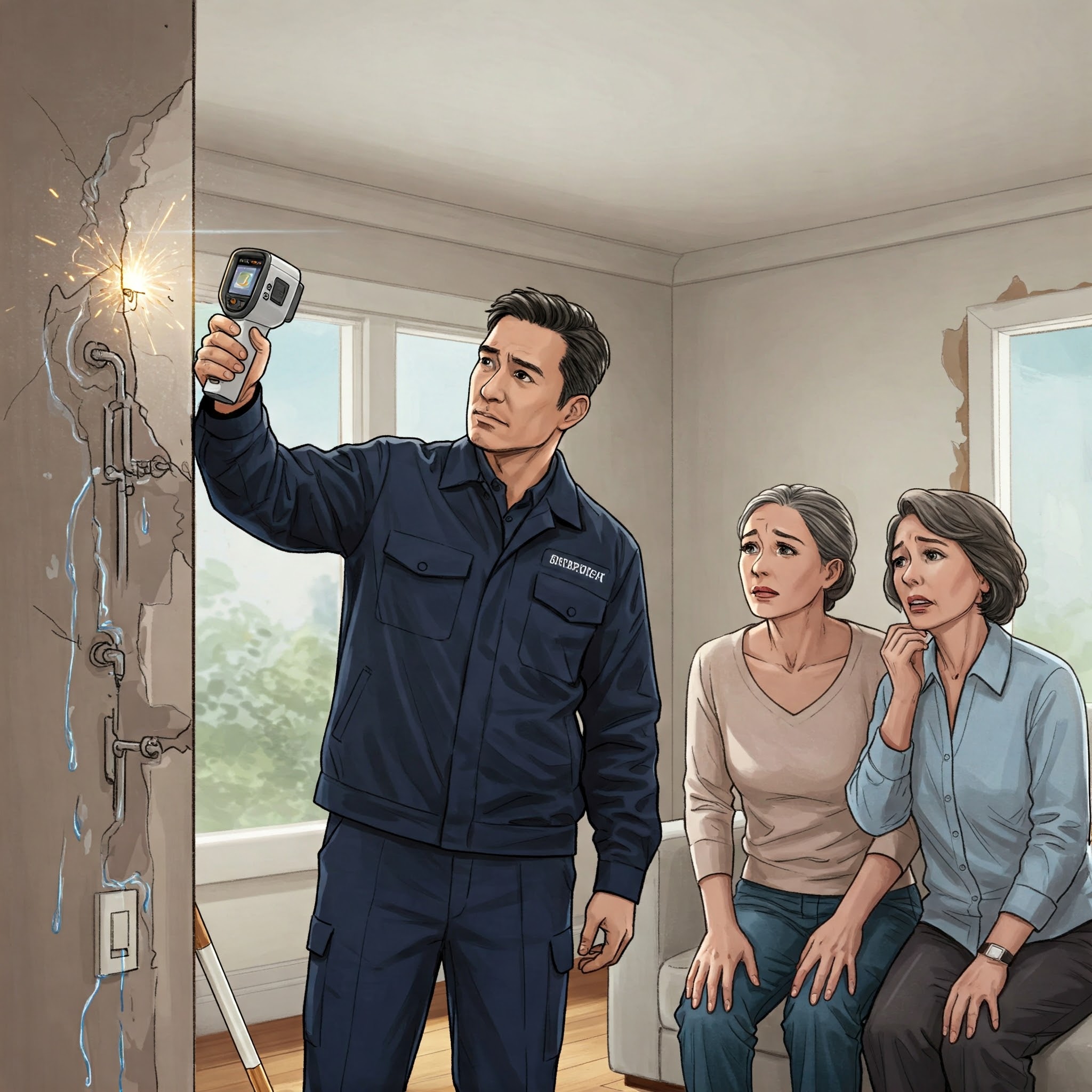Introduction:
In the competitive real estate markets of Pennsylvania, Delaware, and Maryland, knowledge is power. For realtors, that means ensuring your clients have the most thorough understanding of a property’s condition by partnering with an experienced home inspector. For homebuyers, it’s about making informed decisions that protect your investment by performing a home inspection. In this pursuit of transparency, one tool stands out: the infrared (IR) camera. While many home inspectors still rely on traditional methods, those who neglect the power of IR technology are doing their clients a disservice. This blog post will delve into why an infrared camera is not just a “nice-to-have” but a non-negotiable component of a comprehensive home inspection, and why you should be wary of inspectors who don’t utilize it.
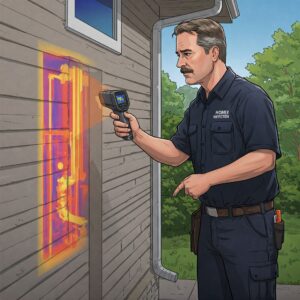
The Power of Thermal Imaging In A Home Inspection:
An infrared camera detects thermal energy (heat) emitted by objects and converts it into a visual image. This allows inspectors to see temperature variations that are invisible to the naked eye. These variations can indicate a range of hidden issues, from moisture intrusion and insulation deficiencies to electrical hotspots and plumbing leaks. In essence, an IR camera acts as a “window” into the unseen, providing a level of detail that traditional inspections simply cannot match.
Top 3 Reasons You Shouldn’t Use a Home Inspector Who Doesn’t Use an Infrared Camera:
-
Missed Moisture Intrusion and Potential Water Damage:
- Moisture intrusion is a leading cause of property damage, leading to mold growth, structural decay, and costly repairs. Traditional inspections can often detect visible signs of water damage, but they may miss hidden moisture trapped behind walls, ceilings, or floors. This is where an IR camera excels.
- Why it matters:
- According to the EPA, “Moisture control is fundamental to preventing mold growth” (EPA, “A Brief Guide to Mold, Moisture, and Your Home“).
- Water damage claims are a significant portion of homeowner insurance claims. The Insurance Information Institute reports that water damage and freezing account for 29% of all homeowners insurance claims.
- Hidden moisture can lead to mold growth which affects health. The CDC states that molds produce allergens that can trigger allergic reactions or asthma attacks.
- How an IR camera helps:
- An IR camera can detect temperature differences caused by evaporative cooling, which occurs when moisture evaporates. This allows inspectors to pinpoint the source of moisture intrusion, even if there are no visible signs.
- By identifying hidden moisture, inspectors can help prevent costly water damage repairs and potential health hazards.
- In areas with high humidity, like many parts of PA, DE, and MD, moisture intrusion is very common.
- Implication of missing it:
- Deals can fall through due to hidden mold or water damage found later.
- Homeowners can be stuck with large, unexpected repair bills.
-
Undetected Insulation Deficiencies and Energy Waste:
- Proper insulation is crucial for maintaining a comfortable indoor environment and reducing energy costs. Traditional inspections can assess visible insulation, but they may miss gaps, voids, or compressed insulation within walls or attics.
- Why it Matters:
- The U.S. Department of Energy estimates that homeowners can save up to 15% on heating and cooling costs by properly insulating their homes (U.S. Department of Energy, “Insulation”).
- Poor insulation can lead to drafts, uneven temperatures, and increased energy consumption, resulting in higher utility bills.
- In regions like PA, DE, and MD, with distinct seasonal temperature variations, adequate insulation is especially important for energy efficiency.
- How an IR camera helps:
- An IR camera can detect temperature differences caused by heat loss or gain through poorly insulated areas. This allows inspectors to identify insulation deficiencies that would otherwise go unnoticed.
- By identifying insulation issues, inspectors can help homeowners improve energy efficiency and reduce their carbon footprint.
- Implication of missing it:
- Homeowners deal with higher utility bills.
- Comfort issues arise due to uneven temperatures.
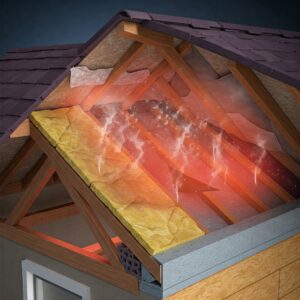
3. Overlooked Electrical Hotspots and Potential Fire Hazards:
-
Electrical issues are a leading cause of house fires. Traditional inspections can identify visible electrical defects, but they may miss hidden hotspots caused by loose connections, overloaded circuits, or damaged wiring.
-
- Why it Matters:
- The National Fire Protection Association (NFPA) reports that electrical distribution and lighting equipment are the third leading cause of home fires (NFPA, “Home Fires Involving Electrical Distribution or Lighting Equipment”).
- Electrical hotspots can lead to overheating, arcing, and ultimately, fires.
- Electrical safety is paramount in any home inspection.
- How an IR camera helps:
- An IR camera can detect temperature differences caused by electrical hotspots, even if they are hidden behind walls or in electrical panels. This allows inspectors to identify potential fire hazards before they cause damage.
- By identifying electrical issues, inspectors can help prevent fires and ensure the safety of homeowners.
- Implication of missing it:
- Increased risk of electrical fires.
- Liability issues for realtors if a known hazard is missed.
- Why it Matters:
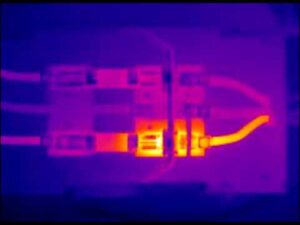
The Importance of Experience and Certification:
It’s not enough for an inspector to simply own an IR camera. They must also have the experience and training to interpret the thermal images correctly. A certified thermographer has the knowledge to identify anomalies, distinguish between different types of thermal patterns, and provide accurate reports.
Don’t settle for a home inspection that leaves you in the dark. Choose a home inspector who utilizes the power of infrared technology. Contact Homer Inspection Services today for a comprehensive home inspection that provides you with the peace of mind you deserve.
Conclusion:
In the fast-paced real estate markets of PA, DE, and MD, informed decisions are crucial. By choosing a home inspector who utilizes infrared technology, realtors and homebuyers can gain a deeper understanding of a property’s condition, prevent costly repairs, and ensure the safety of their investment. Don’t let hidden issues derail your real estate goals—see the unseen with an infrared camera. For further reading, check out this InterNachi article.
#HomeInspection #InfraredCamera #ThermalImaging #RealEstate #PArealestate #DErealestate #MDrealestate #PhiladelphiaHomes #WilmingtonDE #BaltimoreRealEstate #HomeBuying #HomeSelling #PropertyInspection #RealEstateTips #MoldInspection #WaterDamage #HomeSafety #EnergyEfficiency #RealtorLife #InspectionServices
